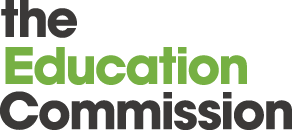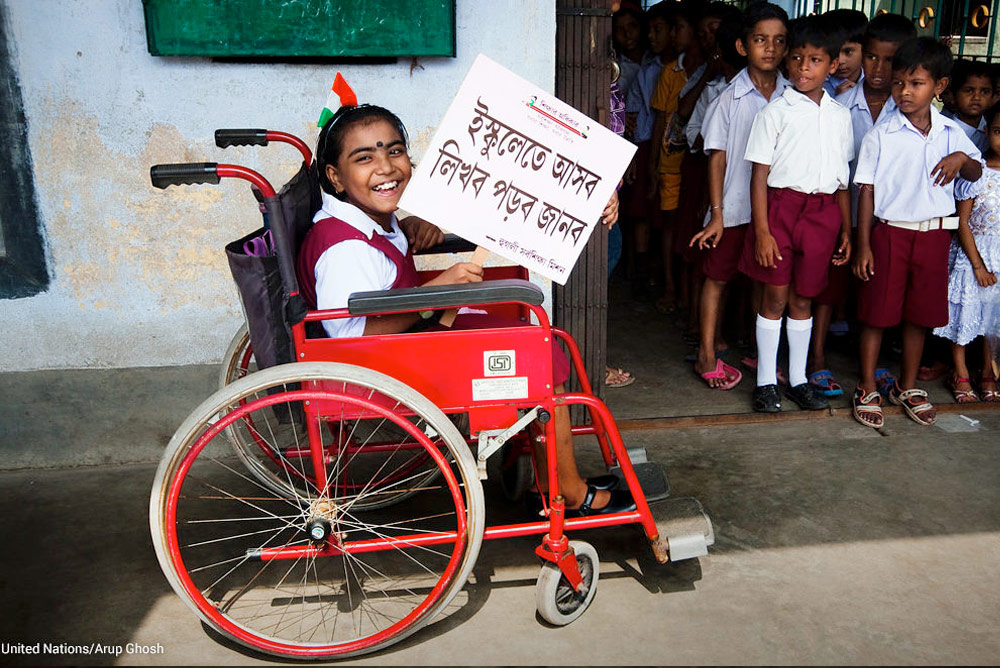Nidhi Singal and Anuradha De
The #CostingEquity Report launched on 17th October at the UN General Assembly clearly states that at a time when global education funding is in decline, such cuts have a disproportionate impact on children with disabilities. The impact of this decline stands in stark contrast to the findings of the International Commission on Financing Global Education Opportunity’s (Education Commission) report calling for transformation through inclusion. The Commission encourages countries to embrace progressive universalism by expanding the provision of quality education for everyone while prioritizing the needs of the poor and disadvantaged.
The #CostingEquity Report purports that in order to achieve disability-inclusive education, the international aid community needs to earmark aid for disability-inclusive approaches, as children with disabilities are among the least likely to be in school, and even when in school, are likely to have poor learning outcomes. As noted in the SDG commitments, mechanisms to track funding for inclusion and reporting against equity indicators is vital. Lack of accounting makes it impossible to disaggregate where funding is going, in special or inclusive education. In the few countries which do have an inclusive education plan or policy, there is no guarantee of adequate funding for implementation.
In this blog, we highlight how India, which has some of the most progressive policies and programmes among poorer countries for addressing the educational needs of children with disabilities, is let down by the schism between policy aspirations and budgetary allocations. At one level, it is notable that India has formulated an Inclusive Education for Disabled at Secondary Education Scheme (IEDSS), launched in 2009-2010, which focuses on children with disabilities studying in government and government aided- schools from classes IX to XII (14-18 years of age). Fully funded by the Central government, it provides support for student (aids and appliances, reader allowance, uniform, transport allowance etc.) and school (includes recurring and non-recurring expenditures such as ramps, resource rooms, salary of staff, additional teaching allowance etc.) components.
The question is whether these ambitious aims translate into results. Our review of the funding costs attached to many of the Scheme’s aims identifies that, if states strictly followed the norms of the IEDSS, an additional recurring expenditure of nearly £11 million every year would be needed. This is equivalent to nearly half of the total planned expenditure of the Central Government on secondary education in India. In addition to this large funding gap, there is also a significant human resource gap. For example, the scheme provides for one special educator for every five children with special needs/disabilities at the block level. In order to meet this level of provisioning, a total of more than 35,000 special educators are needed. With current numbers at around 25,000 – many of whom do not have the required government accreditation – we witness a significant gap.
In 2012-13, IEDSS with three other secondary education programmes were incorporated under the Rashtriya Madhyamik Shiksha Abhiyan (RMSA), India’s national secondary education programme to improve access and quality of secondary education in India. In doing so, various budget lines were merged in the hope that this would improve the efficiency of the expenditures. While an integrated programme has advantages, in the absence of clear and transparent budgetary lines it has become difficult to track actual expenditures and ensure the scheme is implemented as planned. For example, training of teachers for inclusive education is not planned separately but rather included in the total number of days of in-service training provided under RMSA. In turn, there is an absence of information on the number of days of training, and teachers receiving, such interventions.
Budgetary anomalies in the IEDSS are neither unusual nor unique to India; rather these are representative of a broader concern in the field of providing for children with disabilities in complex education systems. Here we put forth three important lessons for disability-inclusive plans:
- Specialist provision in mainstream schools is essential for meeting the needs of many children with disabilities, especially at the secondary level. However, rather than focus on the child, we can provide support to a collection of schools and training special educators to work with teachers to teach all children effectively is crucial.
- Clear budget lines for spending on disability-inclusive education are important for ensuring transparency and accountability in the system. For example, important interventions like educational assessments and adaptations of books need to be reflected in budgets if interventions are to be witnessed on-the-ground.
- Finally, the Education Commission argues that providing for teacher training, provision of appropriate learning materials, and remedial help for children who fall behind (or specialised support in case of children with disabilities) can improve learning outcomes by 25%-53%. These investments in improving learning quality and outcomes are exactly those which will also enable inclusive quality education for children with disabilities. All expenditures do not need additional funds and can be covered through strategic allocation of existing funds.
Effective planning for education of children with disabilities requires thoughtful planning and mobilisation of required resources.
Dr Nidhi Singal is a Reader in Education at the Faculty of Education and a member of the REAL Centre, University of Cambridge. Her research interests focus on education of children/people with disabilities, inclusive pedagogy and the role of international policies in shaping the disability agenda.
Anuradha De is Director of Collaborative Research and Dissemination (CORD), New Delhi, India. CORD is a not-for-profit research organisation which focuses on articulating the problems of the disadvantaged primarily through field-based research. Anuradha is an economist by training and has been involved in research on issues related to education, labour and governance. Her particular focus has been on education statistics and finance.

